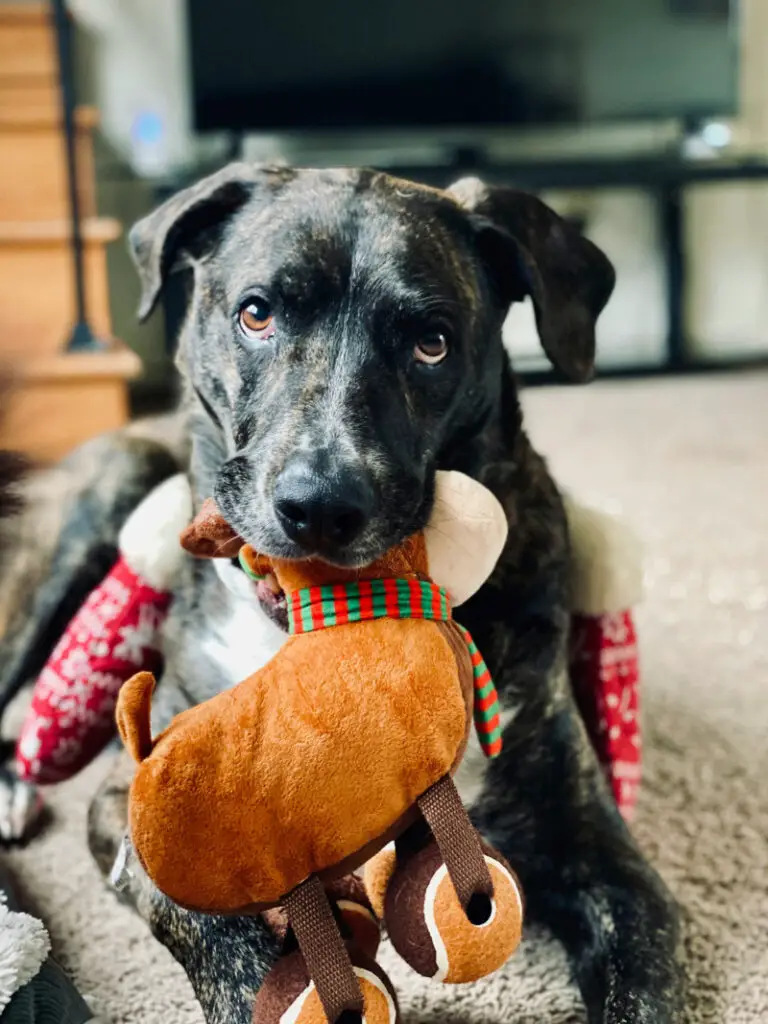Bread is believed to be one of the oldest foods prepared by man. Since then, it has been part of the daily diet, accompanying us for breakfast, lunch, and dinner. Even domestic animals have developed a taste for bread. But should we give it to our pets? Can dogs eat bread? Is it good for dogs to eat bread?
Keep reading on sweet doggo to learn more about the consumption of bread in dogs, what would be the correct way to do it and what are the possible risks to consider.
Table of Contents
Is it safe for dogs to eat wheat bread?
As it is not a toxic food, the vast majority of dogs can eat wheat bread occasionally without causing problems. Both white bread and whole wheat bread are safe options, as long as the dog does not have a specific allergy or stomach sensitivity. It is known that some dogs can be allergic to wheat and intolerant to gluten.
In any case, the consumption of bread in dogs should be occasional and moderate. The dog is a carnivorous animal, whose ideal diet is rich in protein, not carbohydrates. That means they can only eat bread as a treat, as part of a balanced and nutritious diet. In addition, it is important to choose the type of bread well.
What kind of bread can they eat?
While plain white and whole-grain bread (loaf, bimbo) are generally safe, there are some types of bread that aren’t good for dogs.
In general, bread that contains additional ingredients is not a good choice; this includes bread with seeds and nuts (especially macadamia nuts), raisins, chocolate chips, garlic, and onion powder, or sweetbreads containing the artificial sweetener xylitol. All of these ingredients are considered toxic to dogs.
Likewise, it is recommended that the bread has low sugar and fat content.
Be sure to check the ingredient list on any bread before letting your dog eat it. When in doubt, it is best to refrain.
How much bread can a dog eat?
Regardless of the type of bread, the dog is being given, the amount should not exceed 5% of the total calories it eats in a day. Dogs should only eat small portions of bread, always as a reward or occasional treat. Never let your pet eat a whole muffin, as this can cause gas and stomach pain.
Bread is a high-carbohydrate food. If the portion size and frequency of consumption are not controlled, the dog can quickly become overweight.
Does bread have benefits for dogs?
Beyond being an appetizing treat and providing a certain amount of dietary fiber (whole wheat bread), bread does not offer major benefits for dogs. Most of the bread available in stores and supermarkets is made from highly processed wheat flour, which is why they have a low nutritional value.
If you include carbohydrates in a canine diet, it is best that they come from whole foods, such as fruits, vegetables, and tubers.
Contraindications and Risks to Consider
When it comes to dogs and bread consumption, there are other precautions besides controlling the amount.
Raw bread dough
Are you one of those who prefer to make your own homemade wheat bread? Keep an eye on the mass, if your pet is nearby. In case the dog ingests part of the dough, his stomach will provide the perfect conditions for the raw bread to continue rising and expanding. This can give you bloating and an upset stomach, but the real problem is the ethanol released by the yeast.
Once the ethanol is absorbed into the dog’s bloodstream, the dog can quickly experience the effects of alcohol intoxication. Over the course of 30 minutes to 2 hours, an intoxicated dog usually exhibits:
- Elevated heart rate
- Retching and unproductive vomiting
- distended abdomen
- Depression
- Soft spot
- Hypothermia
- Low blood pressure
- Seizures
- Unsteady walk
- Difficulty breathing
According to the Merck Veterinary Manual, raw bread dough made with yeast poses a hazard to most animals; however, dogs face a higher risk due to their indiscriminate eating habits.
Toxic ingredients
Not all type of breads are harmless to your dog. Some can contain really toxic ingredients, like raisins, garlic, onion, chocolate, xylitol, seeds, and macadamia nuts. All of them have the potential to affect the canine gastrointestinal system, causing a wide variety of symptoms ( vomiting, diarrhea, bloating, abdominal pain, and lethargy, among others).
See more at 9 Potential Dog Poisons – What Can Poison My Dog?
Mold
Avoid giving them old bread that is stale or moldy. Just like humans, dogs can suffer from the toxic effects of mold. It is also not recommended that dogs eat a crust of bread.
When not to let a dog eat bread?
As a general rule, bread is usually contraindicated in the following cases:
Overweight
Frequent or excessive intake of bread in dogs can cause weight gain in a short time. This, in turn, can worsen a state of being overweight and lead to obesity.
Diabetes
Common wheat bread is a high glycemic index food, hence it can cause glucose spikes in dogs with diabetes. A diabetic dog that eats bread regularly may have difficulty keeping his blood glucose levels stable. This is especially true if he eats white bread or sandwich bread.
Allergy
Some dogs are allergic to grains such as wheat and therefore, to the flour with which the bread is made. If ingested, the pet may have itchy and red skin, inflammation/infection of the ear, vomiting, diarrhea, excessive paw licking, head shaking, etc.
Gluten intolerance
Giving bread to a dog is also considered counterproductive in case of gluten intolerance or sensitivity. Common symptoms of this condition include diarrhea, hair loss, abnormal weight loss, itching, and irritation of the footpads. Never let your dog eat wheat bread if you suspect he is gluten intolerant.




